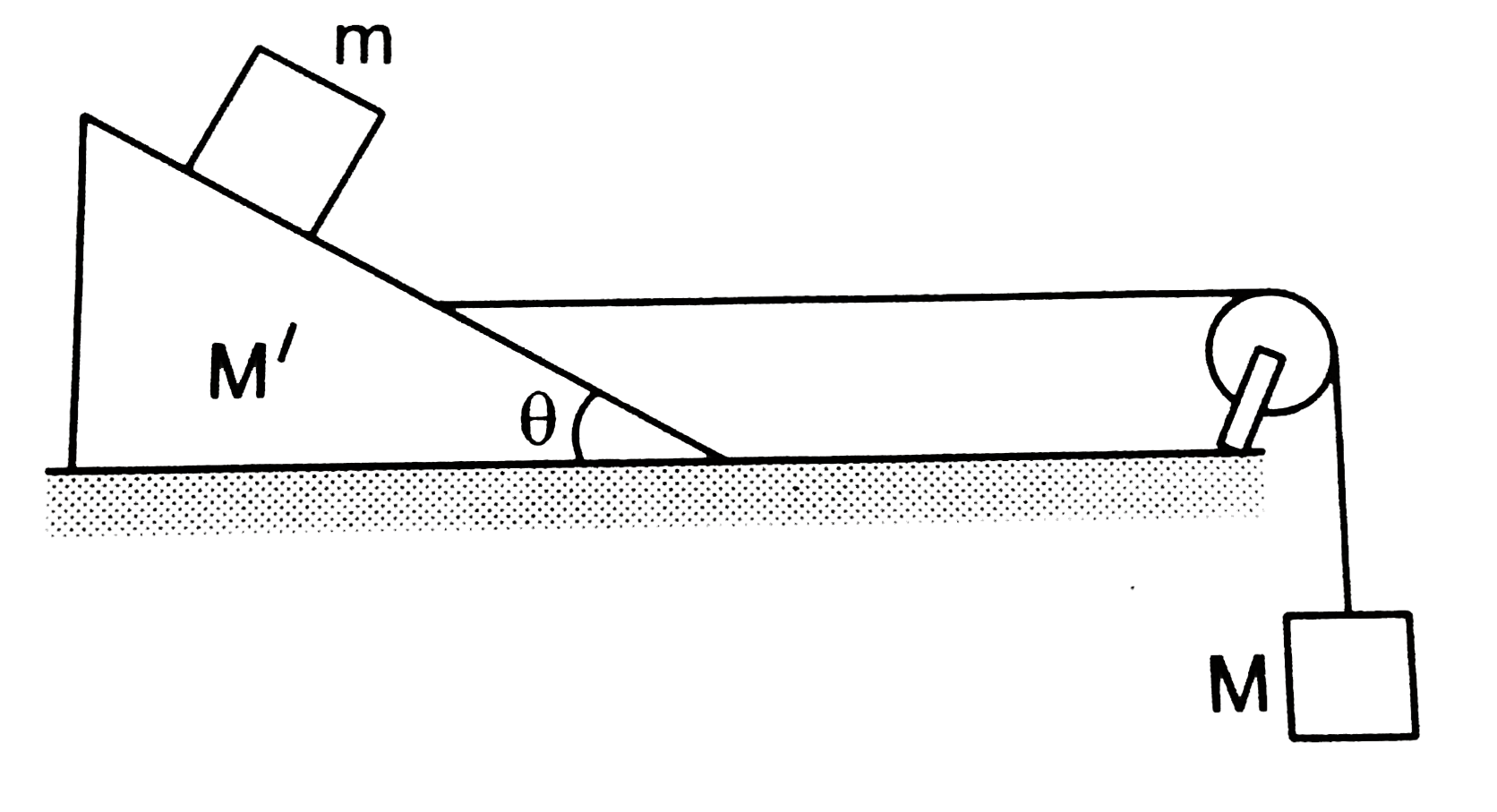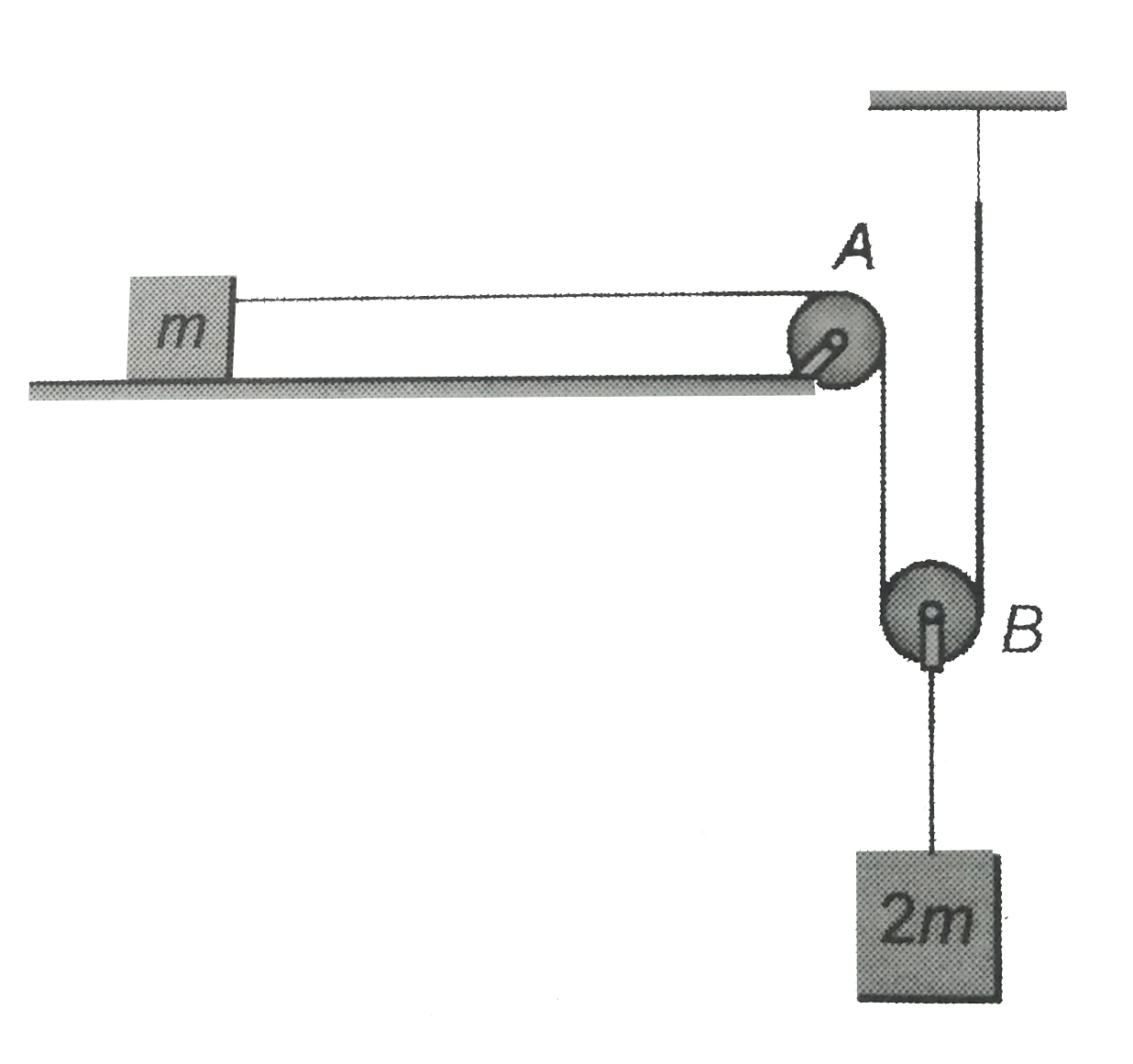Find the acceleration of the blocks A and B in the three situations shown in figure.

Free body diagram

The block m does not slip over M'
From ure i. ………….i.
…..ii.
.......iv.
From equations i. and iv

From equation (ii),
and a= g tan theta
:. M= (M'+M)/(cot theta -1).
Topper's Solved these Questions
- NEWTON'S LAWS OF MOTIONBook:HC VERMAChapter:NEWTON'S LAWS OF MOTIONExercise:Objective 2
Explore 9 Videos
- LAWS OF THERMODYNAMICSBook:HC VERMAChapter:LAWS OF THERMODYNAMICSExercise:Short Answer
Explore 15 Videos
- PHYSICS AND MATHEMATICSBook:HC VERMAChapter:PHYSICS AND MATHEMATICSExercise:Exercises
Explore 34 Videos
Similar Questions
Knowledge Check
The acceleration of the block (A) and (B) respectively in situation shown in the figure is: (pulleys and string are massless).
 A2g7 downward, g7 upwardB2g3 downward, g3 upwardC1013g downward, 5g13 upwardDnone of these
A2g7 downward, g7 upwardB2g3 downward, g3 upwardC1013g downward, 5g13 upwardDnone of these
Find the acceleration of the A and B in the situation show in the figure

View SolutionFind the acceleration of each block in the situation shown in the figure. All the surface are smooth and the pulleys and sttings are light.

View SolutionFind the constrained relation among the acceleration of blocks A, B and C for the situation shown in figure-1.97. Ratio of radii of step pulley is given as 1:2.

View SolutionFind the acceleration of the block of mass M in the situation of figure. The coefficient of friction between the two blocks is μ1 and that between the bigger block and the ground is μ2.
View SolutionFind the acceleration of the 500 g block in figure.

View SolutionFind the acceleration of the block of mass m in the arrangement shown in the following figures. The masses of the pulleys and the threads, as well as the friction are assumed to be negligible.

View SolutionFind the size of image formed in the situation shown in figure.

View Solution

